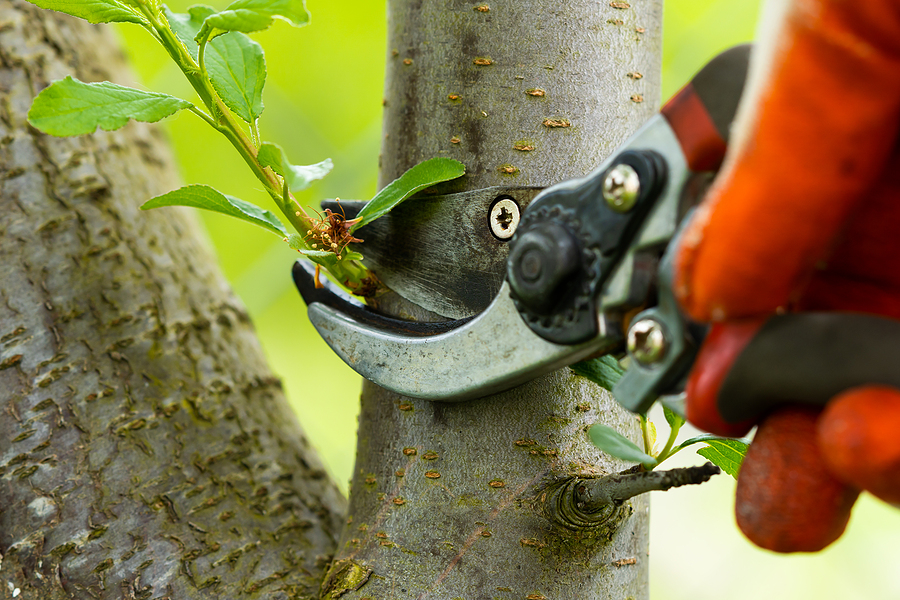Trees are more than just background elements in our landscapes — they are living structures that add beauty, shade, biodiversity, and environmental value to any outdoor space. Like any part of a thriving garden or property, trees require attention and management to maintain their health, structure, and appearance. One of the most crucial aspects of caring for trees is pruning, a practice that involves the careful removal of specific parts to enhance growth, safety, and longevity.
Understanding the how, when, and why behind this vital maintenance task can make the difference between a thriving tree and one that struggles or poses risk. In this article, we’ll explore the importance of pruning, techniques and tools involved, the benefits of regular maintenance, and how to avoid common mistakes. Whether you have young saplings or century-old giants, informed care is the key to their success.
Why Trees Need Routine Pruning
While trees in wild forests often grow without human intervention, those in managed landscapes interact closely with structures, people, and other design elements. In such settings, unpruned trees can become hazards, suffer from poor health, or outgrow their space.
Primary reasons for pruning include:
- Health: Removing dead, diseased, or damaged branches helps prevent decay and pest infestation.
- Structure: Pruning improves the shape and strength of a tree, helping it grow in a balanced, stable form.
- Safety: Overhanging branches or weak limbs near walkways, driveways, or buildings can present hazards that pruning helps prevent.
- Aesthetics: Thoughtful shaping enhances a tree’s natural beauty and contributes to overall landscape design.
- Growth Control: Pruning can limit or direct growth in specific directions, especially near wires, roofs, or gardens.
Ultimately, pruning is an act of stewardship — a way to guide a tree’s development while respecting its natural form and biology.
Types of Pruning Techniques
Effective pruning isn’t random cutting. It’s strategic, based on both tree species and the goals of the care. Here are the most common techniques used in different situations:
1. Crown Cleaning
This involves removing dead, dying, or diseased branches from the crown (top) of the tree. It’s a maintenance method used to reduce the risk of decay and improve appearance.
2. Crown Thinning
Selective removal of branches to increase light penetration and air circulation. This is especially useful for mature trees to reduce wind resistance and improve internal structure.
3. Crown Raising
This removes lower branches to elevate the canopy. It’s often done to provide clearance for pedestrians, vehicles, or structures.
4. Crown Reduction
Reducing the size of the canopy by trimming back leaders or limbs to lateral branches. It’s used when a tree outgrows its space but shouldn’t be confused with topping, which is harmful.
5. Structural Pruning
Especially important for young trees, this shapes a strong central leader and evenly spaced scaffold branches to promote a durable structure that resists weather damage.
Each of these methods plays a different role, and choosing the right one depends on the tree’s age, species, condition, and surroundings.
Best Time of Year for Pruning
Timing matters when it comes to pruning. Different seasons offer different benefits and potential risks, so understanding when to prune can prevent damage and maximize effectiveness.
- Late Winter to Early Spring (Dormant Season): This is generally the best time to prune most trees. Without leaves, it’s easier to see structure, and the tree is less vulnerable to disease or stress.
- Summer: Useful for slowing growth or correcting minor issues, such as shaping or removing water sprouts.
- Fall: Typically discouraged, as cuts may not heal well and diseases or fungi are more active.
- Spring Bloomers: For flowering trees, prune shortly after they finish blooming to preserve next year’s flowers.
Knowing the ideal window helps ensure your efforts result in healthy, vigorous regrowth instead of stress or decline.
Tools of the Trade
Having the right tools not only makes pruning easier but also improves safety and outcomes. Here are the essential tools for most tree care needs:
- Hand Pruners: Great for cutting small branches (up to ¾ inch thick).
- Loppers: Longer-handled and ideal for limbs up to 1½ inches.
- Pruning Saw: Best for larger branches. Choose curved or straight based on access needs.
- Pole Pruner: Extends your reach for high limbs without a ladder.
- Chainsaw: For professional or experienced use, especially on large trees or during removals.
- Safety Gear: Gloves, eye protection, helmets, and harnesses are essential for safe pruning.
Keep tools sharp and clean to prevent damage to the tree and avoid spreading disease between cuts.
Step-by-Step Guide to Pruning
Whether you’re working with young or mature trees, here’s a general guide to approaching pruning responsibly:
1. Inspect the Tree
Look for signs of disease, dead wood, awkward growth, or crowding. Visualize your goals before making the first cut.
2. Start with the Three D’s
Remove all Dead, Diseased, and Damaged wood. These are priorities for health and safety.
3. Focus on Structure
Eliminate crossing branches, co-dominant leaders, and inward-growing limbs. Establish an open structure with good spacing.
4. Make Proper Cuts
Cut outside the branch collar — the swollen area where the branch meets the trunk. Avoid flush cuts or leaving stubs, both of which interfere with healing.
5. Don’t Over-Prune
Never remove more than 25% of a tree’s canopy in a single season. Excessive pruning can lead to stress, sunscald, or unwanted sucker growth.
Common Mistakes to Avoid
Even with the best intentions, improper pruning can do lasting damage. Here are key mistakes to steer clear of:
- Topping: Cutting back to stubs or indiscriminately shortening branches is harmful and leads to weak, unstable growth.
- Using Dull Tools: Ragged cuts take longer to heal and expose trees to pathogens.
- Ignoring Tree Species Differences: Some trees bleed sap when pruned at the wrong time; others are prone to disease if pruned in wet seasons.
- Neglecting Safety: Falling limbs, unstable ladders, and poor visibility are serious risks. Always put safety first.
If you’re unsure how to proceed, consulting with an arborist or tree care professional is a smart move.
Health and Long-Term Benefits of Regular Pruning
Proper pruning isn’t just about solving problems; it’s about setting trees up for long-term success. Regular maintenance can extend a tree’s life and ensure it remains structurally sound, visually appealing, and resilient against wind, pests, and disease.
Key Benefits Include:
- Stronger structure, reducing the likelihood of storm damage
- Improved air circulation, reducing fungal issues
- Enhanced flower and fruit production for ornamental and edible species
- Better balance between canopy and root system
- Prevention of hazards from overhanging or broken branches
When done right, tree trimming becomes a proactive investment in both your property and the surrounding environment.
When to Call a Professional
Some pruning tasks are best left to certified arborists or tree care professionals. These include:
- Large or mature trees near structures or power lines
- Trees showing signs of disease or decay
- Heavy branches requiring rigging or climbing
- Restoration pruning for neglected trees
Professionals not only bring expertise but also the proper equipment and insurance to safely handle complex situations. Knowing when to delegate helps protect both your trees and your safety.
If you’re considering a major reshaping or health assessment, a professional tree trimming service can provide the precision and insight needed to do the job right.
Sustainable Tree Care for the Future
Modern tree care doesn’t just look at aesthetics or short-term goals. Sustainable pruning aligns with larger environmental considerations, promoting biodiversity, supporting native wildlife, and ensuring the long-term vitality of the ecosystem.
Sustainable Practices Include:
- Avoiding unnecessary removal of mature trees
- Pruning to enhance tree health rather than just appearance
- Preserving natural canopy shapes and minimizing disruption to habitats
- Using manual tools where possible to reduce noise and emissions
By taking a balanced and informed approach, your tree care routine can support not just individual plants, but the entire landscape they live in.
Conclusion: The Art and Responsibility of Tree Care
Trees offer unmatched beauty and ecological benefits, but they don’t care for themselves. Thoughtful pruning is one of the most important gifts we can give them — a form of long-term guidance that helps ensure strength, safety, and splendor.
Whether you’re tending a young ornamental or a towering shade tree, the principles of tree trimming are universal: respect the tree’s biology, prune with purpose, and think beyond the moment. A well-pruned tree not only looks better — it lives better.
With each thoughtful cut, you help shape the legacy of your landscape, ensuring your trees continue to grow with grace, balance, and vitality for years to come.

















